When Gideon Mendel left South Africa in 1990, three years before the official end of Apartheid, he left a huge archive of transparencies and negatives in storage. “I was leaving quite a hectic, chaotic situation,” says the London-based artist, who began working as a news photographer in the 1980s, documenting the often violent and distressing scenes during the final years of a system of institutionalised racial segregation. Removing what he thought of as “important” photographs, Mendel packed the rest of his images into a couple of boxes and left them with a friend.
In 2016, 25 years later, Mendel learned that the top inch of one the boxes had been water-damaged. Coincidentally, the photographer had been working on a long-term project about climate change and flooding called Drowning World. Within it is a series that draws on an archive of more than 1,000 water-damaged photographs gathered on journeys through flooded communities. “I was already attuned to the effects that water can have on photographic emulsions,” says Mendel, describing these effects as “radioactively charged”. Thinking there could be something interesting in this forgotten work that he had packed away and neglected decades earlier, he decided to revisit the memories.
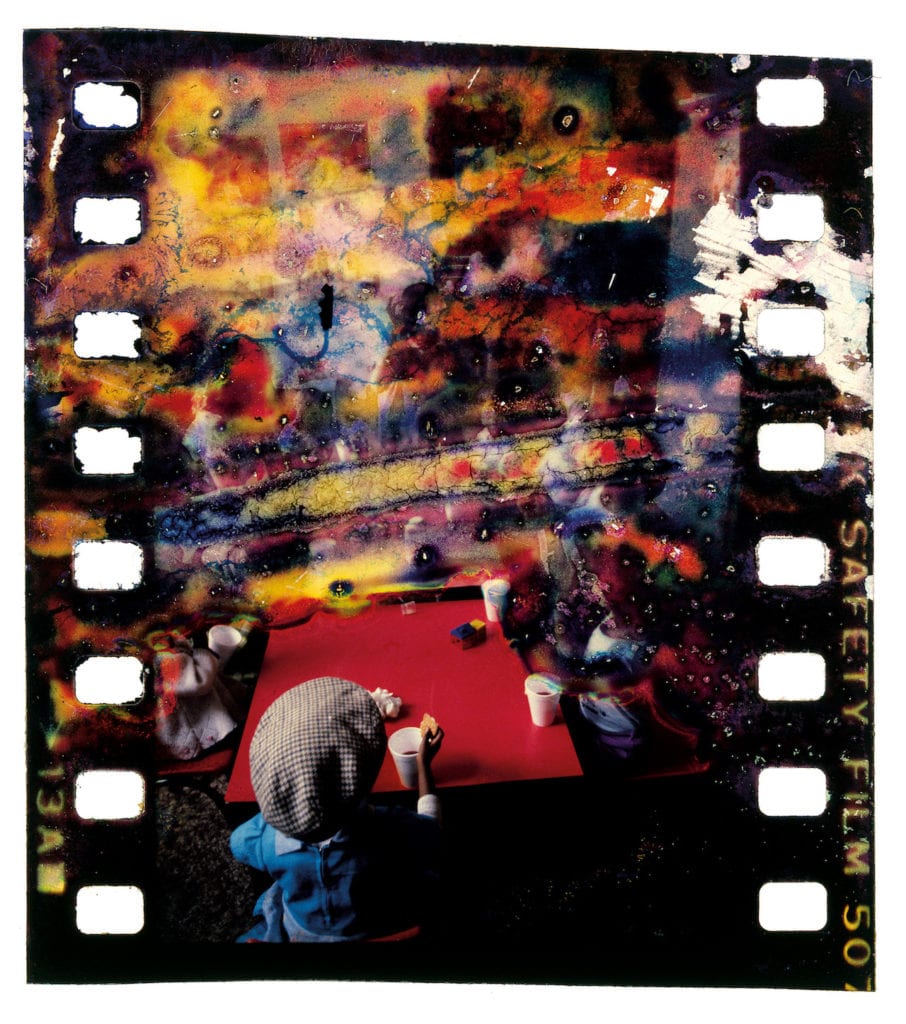
“It does feel important, and it feels emotional,” says Mendel, about the process of looking back on images from an important time in not only his development as a photographer, but a time of huge political and social unrest in his home country. “With very little experience I was thrown into intense, dangerous and violent situations. No one spoke about stress or trauma, you just had to deal with it,” he says. “A lot of people said as long as you had a camera in front of you, nothing could affect you. But I think I was quite deeply affected.”
These images, many seen for the first time, are now presented in Mendel’s latest photobook, Freedom or Death. Split into three parts, each section is categorised by a different process of intervention. The first section presents the series of water-damaged negatives, which, for Mendel, speak about the fragility and malleability of memory, unintentionally moulded and distorted by the inevitable cycle of nature and time.
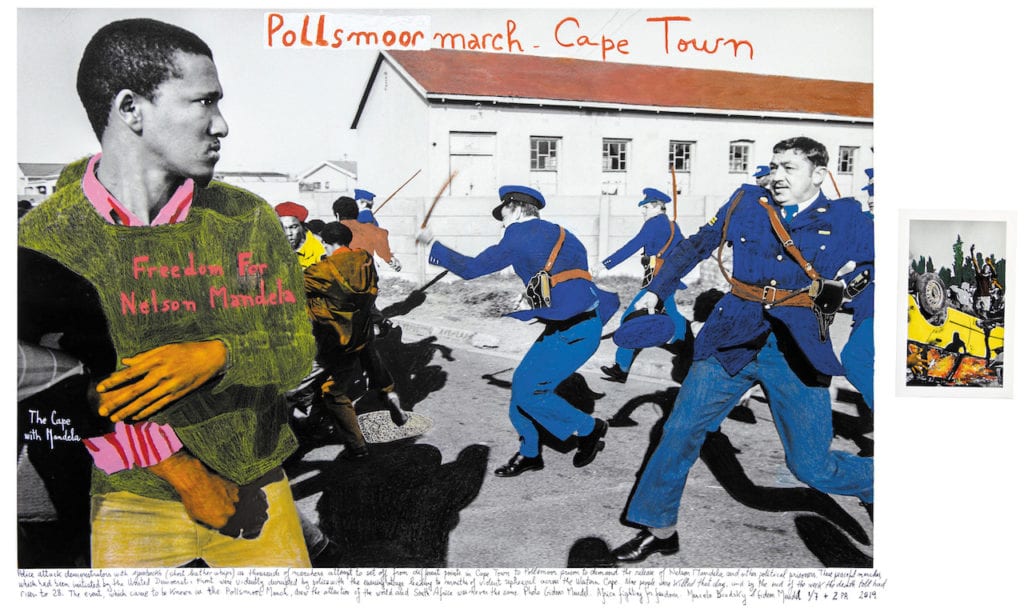
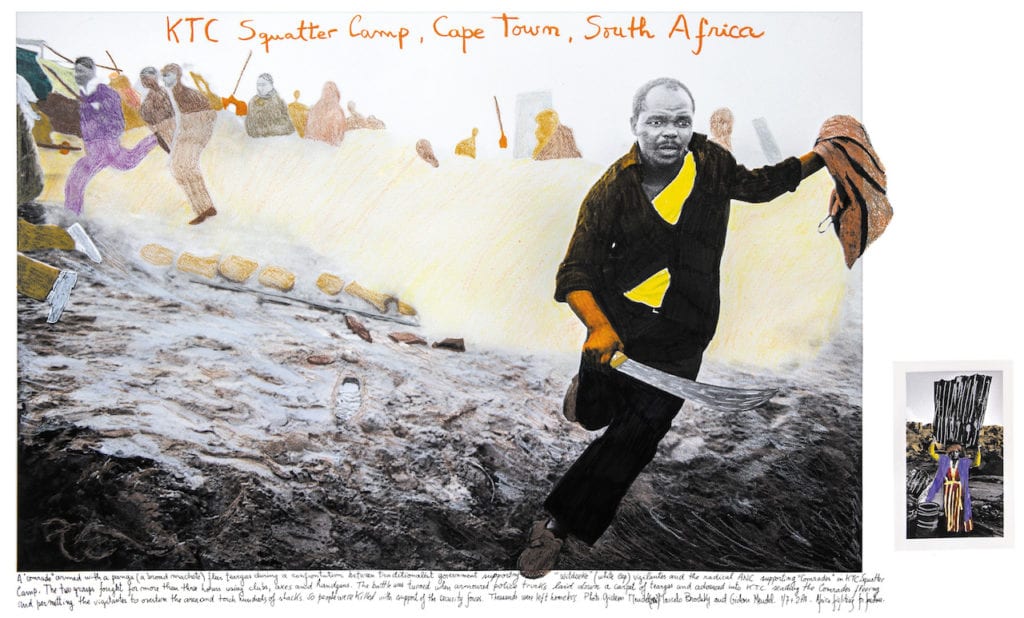
The second section is a collaboration with Argentinian artist and human rights activist Marcelo Brodsky, who writes and draws on Mendel’s photographs to enhance their historical narrative. The images in this section focus on objects that are symbolic of conflict and repression: stones, teargas, wooden guns, and the sjambok — a heavy rubber whip used by the police.
The images in the third section are derived from press prints made during Mendel’s time as a news photographer for agencies including Magnum, AFP and Network Photographers. Mendel digitally merged the front and reverse of the prints, creating a superimposed combination of image, text, and markings.
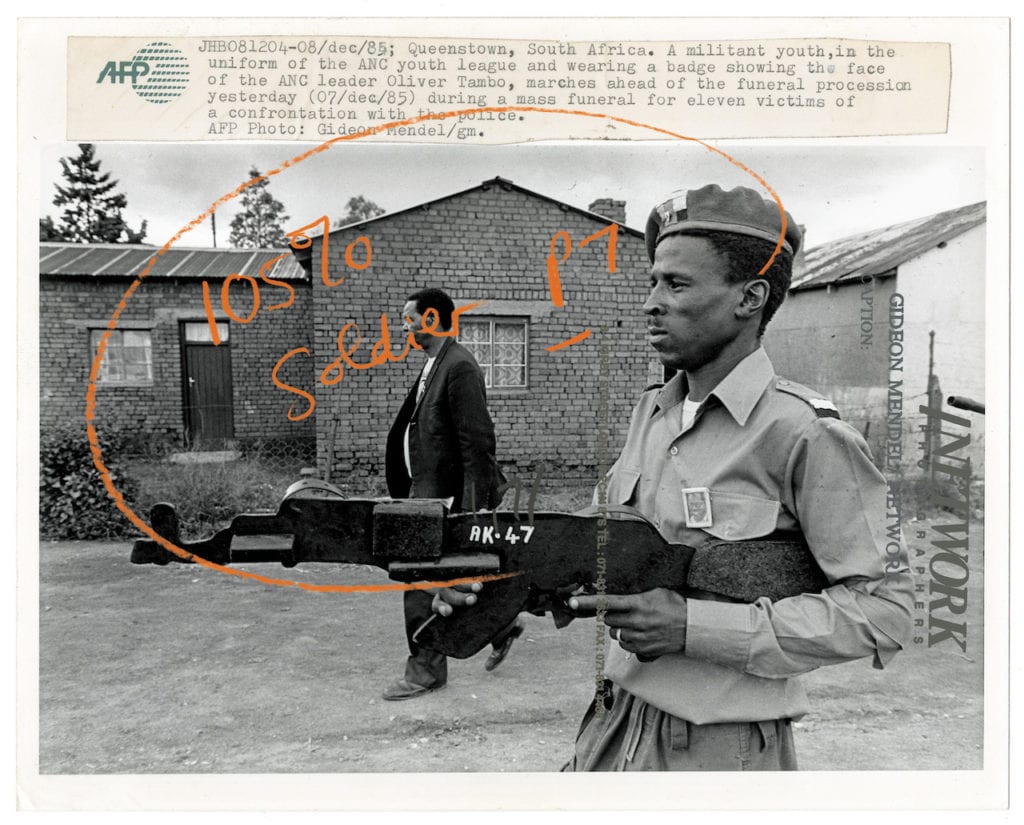
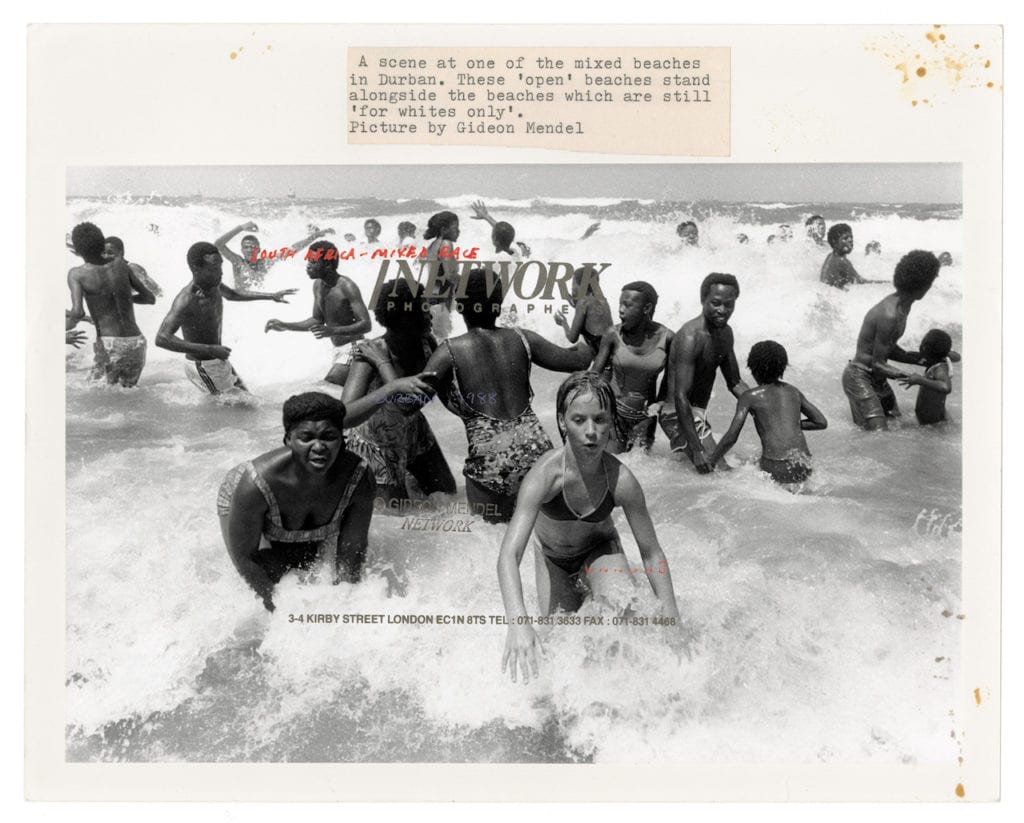
Each process of intervention has a different effect, but they all return to the idea of reframing the narrative. Through this attempt to re-engage with these documents of history — a history of conflict, tragedy and struggle — Mendel was also able to re-engage with his own memories. “I’ve come to realise that to some extent I was packing away those traumas within myself, like how I packed away the boxes,” he reflects. “Unpacking it has been an important process for me.”
Freedom or Death by Gideon Mendel is published by GOST. The book launch will take place at UCL in London on 28 January 2020. The work will also be shown at ARTCO’s new gallery in Cape Town from 15 February 2020.
—
